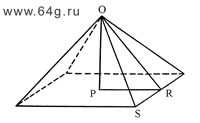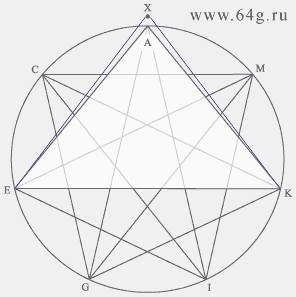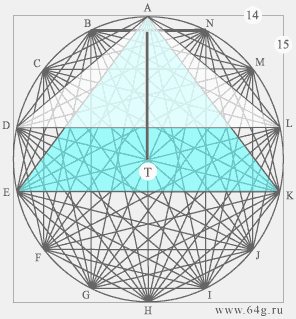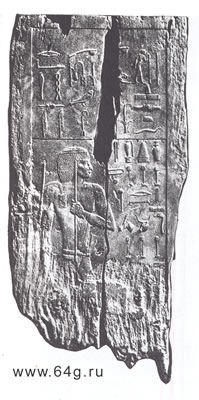-
The heptagonal geometrical network of lines is universal spatial figure which
during development of human civilization was used for measurements of
proportional ratios and creation of objects in which people aspired to fix
principles of global harmony. Or it is possible to tell that people aspired to
fix or cipher knowledge of world around in the created objects of human culture,
for what artists used proportional ratio of heptagon which among other correct
polygons is the most significant figure which expresses proportions of a human body.
The most significant monument of human knowledge among many objects of world
culture are Egyptian pyramids, and in particular the pyramid of pharaoh Cheops or Khufu.
I cannot result the detailed analysis of all Egyptian pyramids and
consequently I give the description only pyramid of Khufu which is the most
significant. But analyses of geometrical sizes and proportions of other pyramids
of ancient Egypt can be made similarly with pyramid of Khufu.
And also I cannot approve that great Egyptian pyramids have been constructed
according to geometrical proportions of a human body and geometry of heptagon,
namely I cannot approve that builders have ciphered the ideal human figure and
shapes of heptagon in architecture of the Egyptian pyramidal designs, but such
proportions are obvious.
According to different sources of information in researches of Egyptologists
there are different measurements for the pyramid of Khufu, but as the most
authentic and obvious it is possible to consider researches according to which
the basic sizes of this pyramidal design are following.
Length of the side basis is 500 cubits (elbows).
Height is 318 cubits.
Angle of incline of lateral sides is 51 degrees 50 minutes.
The size of Egyptian cubit is 466 millimeters that is approximately equal to
length from elbow up to the basis of fingers if height or human stature makes 176
centimeters.
According to the listed sizes the main proportions of the Khufu's pyramid
consist in ratios of triangle which is formed by height OP, half
of the basis length PR and apothem (length of lateral sides) OR, that is shown
on the chart.
 |
The number of golden section
is ciphered in proportions of lines OR/PR. This is famous Golden Ratio
solution or Divine Section. The number "Pi" is ciphered in linear ratio of PR/PO. The angle PRO with top in point R is incline of lateral sides. The angle PSO with top in point S is incline of diagonal edges. Angles of inclines of lateral sides and diagonal edges have different magnitudes in pyramids. Angles PRO and PSO are key parameters which allow to compare sizes of the Khufu pyramid to proportions of heptagon. |
-
Many Egyptologists and researchers of pyramids assume that builders of ancient Egypt knew numerical value of golden section and number "Pi". And also Egyptologists assume that these golden or divine numbers were key in the architectural project of the Egyptian pyramids, but actually the knowledge of these numbers is not necessary as attainments of heptagonal proportions suffices for construction of pyramidal designs if to use ratios of lines which exist in the geometrical figure of heptagon, that is shown in following chart.
 |
The triangle AEK is approximate silhouette
of lateral sides of the Khufu pyramid. The shown silhouette of lateral sides is approximate as the size of heptagonal angle AEK with top in the point K is 360/7=51,429, namely 51 degrees and 25,71 minutes, but the size of incline of lateral sides in the Khufu pyramid is 51 degrees and 50 minutes. Egyptian builders compensated the existing difference by addition of human stature sizes AX to height of triangle AEK. Namely builders of the Khufu pyramidal design have conditionally placed a stature of human figure at top of pyramid, and as a result they have received 51 degrees and 50 minutes as the angular size EKX in the point K. Namely if the height of triangle XEK is 318 cubits then height of the triangle AEK is approximately 314 cubits, and height of a human stature is 4 cubits. |
Egyptian builders have increased the correct angle of heptagon as if at the
top of pyramid there is a human figure, and as a result builders have ciphered
the number of golden section in ratio of lines EK/KX, and proportions of a human
body have been incorporated in the general geometry of pyramidal design, that
was an idea of architectural project.
In essence builders and designers of architectural plans of the great Khufu
pyramid have entered double heptagonal or otherwise to tell diheptagonal network
of lines in an alive circle in which sizes of vertical and horizontal diameters
are different in relative proportions to a human height, that is shown in
following chart.
 |
The diheptagonal network of lines is entered within the
alive circle which has ratio of
vertical and horizontal diameters approximately 15/14 that corresponds
to relative proportions of male and female bodies. I can not specify exact ratio of diameters of an alive circle in the geometrical drawing or otherwise tell in the architectural project of Khufu as exact mathematical calculations are necessary for this purpose. But it is possible to assume that ratio of diameters of an alive circle in the geometrical drawing of Khufu pyramidal design was calculated as a result of transformation, namely as a result of deformation of a correct geometrical circle in alive figure when the line TA is precisely equal to sizes of lines CE or DF. Blue contour in the chart specifies an approximate silhouette of lateral sides, and white contour specifies an approximate silhouette of diagonal edges of the Khufu pyramid. Angle DLA with top in point L is the incline of diagonal edges which valid magnitude is 40 degrees and 59 minutes in the pyramid of Khufu. Sizes of angles DLA (inclination of diagonal edges) and EKA (inclination of lateral sides) with tops in points L and K differ from angular sizes of correct diheptagon by relative proportions of a human stature, as diheptagonal linear pattern in the project of Egyptian pyramid of Khufu is entered in space of an alive circle which is transformed according to height of a human stature. Namely a diheptagon of Khufu pyramidal design is transformed according to height of a human body which conditionally is at the top of pyramid and has size of 4 Egyptian cubits or elbows. |
The shown geometrical drawings are approximate as sets of numbers and
mathematical formulas are necessary for exact calculations, that is inexpedient
in a context of art gallery of phantom images. But according to the shown
drawings it is possible to do exact geometrical calculations in view of
scientific researches of esoteric principles of global harmony, or in view of
mathematical decisions of other problems in architecture or any sciences. Or in
the fine arts, or in the fashion design, or in the body building of somatic shapes.
The resulted drawings allow to understand the basic proportions of pyramids, but
also in geometrical measures of pyramidal designs of ancient Egypt there are
ciphered sets of other mathematical ratios which correspond to principles of
global harmony and geometry of world around.
It is possible to speak that sizes of Great Egyptian Pyramids have measures
of measurements which allow to understand geometrical structures of world
around, and knowledge of these "great Egyptian measures" allows to project and
create objects of human civilization according to universal laws of space.
The basic size of measurements in ancient Egypt was the cubit which consist of
seven palms, and each palm was subdivided into four fingers. Total the cubit
consists of 28 fingers that corresponds to 28 days of lunar month.
Pay attention that the diheptagonal network of lines has 14 tops, and the
quadraheptagonal linear network has 28 tops that also is equal to the number of
days at one lunar month.
In the modern science about ancient Egypt there are different parameters of cubits.
One ordinary Egyptian cubit = 6 palms = 24 fingers = 450 millimeters.
One royal Egyptian cubit = 7 palms = 28 fingers = 525 millimeters.
But however 466 millimeters is the most authentic size of one Egyptian cubit as
it is anthropometrical magnitude or otherwise to tell the measure of a human
body from elbow up to bases of fingers.
 |
The photo at the left shows one wooden panel where the land
surveyor with the measuring rod (measuring wand) in a hand is
represented, namely the photo shows one of 11 wooden carved panels or
boards which were found in the tomb of Hesi-Ra who is considered as the architect
of Egyptian Pyramids. The found panels have images on both surfaces that in the sum is comparable to 22 arcane of cards Tarot. There is hypothesis that the found 11 wooden panels became a reason of the esoteric legend that predictive cards of Tarot have the Egyptian origin. The measuring rod in a hand of the land surveyor is equal to length from middle of a body up to a line of eyebrows that makes two cubits. If to project this measuring rod on the diheptagonal network of lines then it is equal to line AT, and also it is approximately equal to length of a side in heptagon, that is shown in the previous chart. Namely the measuring rod is equal to lines CE, DF, LJ, MK. Hence, the Egyptian cubit is equal to length of a side in diheptagon, namely to distance between two near tops, and any other sizes of measurements are derivatives from the diheptagonal geometrical network in which geometrical model of a human body is entered, that allows to do the statement about ratio of the Egyptian Pyramids with proportions of human somatic shapes. But if the diheptagonal linear network is entered in the alive circle which forms an ellipse in which focal length is proportional to a human stature taken in attitude to height of the pyramid. Otherwise it is possible to tell that difference of diameters or big and small axes of such ellipse corresponds to the attitude of human stature to height of the Khufu Pyramid. |
Egyptian builders have calculated pyramidal designs by means of the measuring
rod, and proportions of a human body have been fixed in the architectural
project of Khufu pyramid, but the sacred Egyptian or Pythagorean triangle with
attitudes of sides 3:4:5 has been fixed in the pyramid of Chephren. Namely
pyramids of Chephren and Khufu have different sizes and geometrical proportions,
but both are calculated according to one measuring rod. Apparently, different
Egyptian pyramids have been calculated by builders as a result of various
transformations or deformations of lines in the diheptagonal geometrical network
at the elliptical space of alive circle.
Look additional information on the
sacred Egyptian or Pythagorean triangle
with proportional ratio of sides 3:4:5 on pages of other website:
www.emotions.64g.ru.
-
In the end of this page it is necessary to tell that in ancient Egyptian
sources of information there are no data on ratio of human somatic shapes with
lines of heptagon and sizes of pyramids, but however the heptagon is a basic
geometrical figure which corresponds with proportions of pyramids and shapes of
human bodies.
And also it is necessary to tell that various sizes of pyramidal designs of
ancient Egypt, and corresponding linear ratios of the double heptagon or
diheptagon with different ratios of vertical and horizontal diameters in space
of alive circles can symbolize mathematical sizes of physical resonances
according to which it is possible to overcome gravitation of the Earth and
resistance of time, or it is possible to take energy from physical resonances of
space with a matter. That can be interesting to inventors of a time machine or
flying constructions which are similar to UFOs of extraterrestrial
civilizations, and also can be interesting to founders of alternative sources of
electric energy which arises from resonances of space.
But it only hypotheses.
The following page tells about proportional measuring tools which can be derivatives from lines of the heptagonal geometrical network.